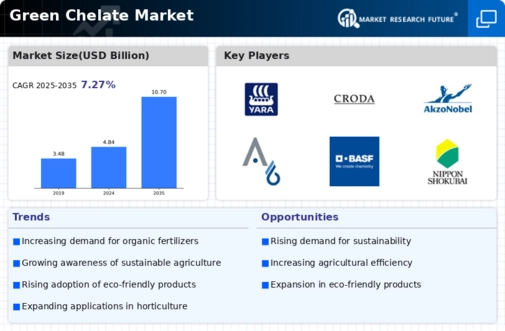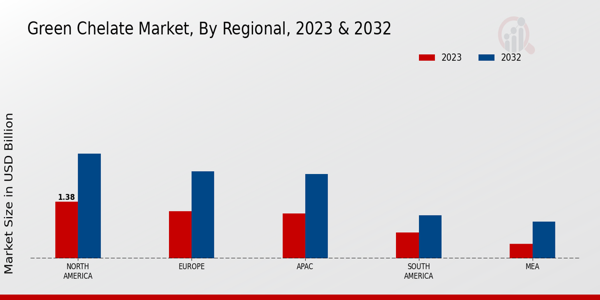Green Chelate Market Summary
The Global Green Chelate Market is poised for substantial growth, expanding from 4.84 USD Billion in 2024 to 10.7 USD Billion by 2035.
Key Market Trends & Highlights
Green Chelate Key Trends and Highlights
- The market is projected to grow at a compound annual growth rate of 7.48 percent from 2025 to 2035.
- By 2035, the market value is expected to reach 10.7 USD Billion, indicating robust demand for green chelates.
- In 2024, the market is valued at 4.84 USD Billion, reflecting the increasing interest in sustainable agricultural practices.
- Growing adoption of eco-friendly agricultural solutions due to rising environmental concerns is a major market driver.
Market Size & Forecast
| 2024 Market Size | 4.84 (USD Billion) |
| 2035 Market Size | 10.7 (USD Billion) |
| CAGR (2025-2035) | 7.48% |
Major Players
Yara International, Croda International, Kraft Chemical Company, FMC Corporation, AkzoNobel, Tianjin Dongli Chemical, AdvanSix, BASF, Nippon Shokubai, Dow, Helena AgriEnterprises, Clariant, SABIC, Nutrien





















